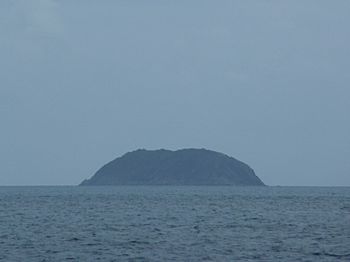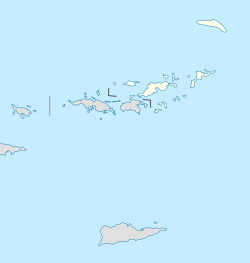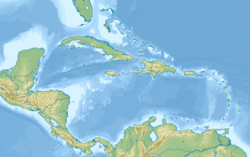Round Rock, British Virgin Islands facts for kids

Round Rock in 2010
|
|
|
The location of Round Rock within the British Virgin Islands
|
|
| Geography | |
|---|---|
| Location | Caribbean Sea |
| Coordinates | 18°23′55″N 64°27′26″W / 18.3985°N 64.4572°W |
| Archipelago | Virgin Islands |
| Administration | |
|
United Kingdom
|
|
| British Overseas Territory | British Virgin Islands |
| Demographics | |
| Population | 0 |
| Additional information | |
| Time zone | |
| ISO code | VG |
Round Rock is a small island located in the beautiful British Virgin Islands. It's a special place because no people live there. You can find it south of Virgin Gorda, east of Ginger Island, and near Fallen Jerusalem Island. This makes it a quiet home for many interesting animals!
Contents
Exploring Round Rock
Round Rock is part of the Virgin Islands, a group of islands in the Caribbean Sea. Even though it's small and no one lives there, it's an important part of the natural world. It's a British Overseas Territory, which means it's connected to the United Kingdom.
Where is Round Rock?
Imagine a map of the Caribbean. Round Rock is a tiny dot in the British Virgin Islands. It's surrounded by clear blue waters. Its exact location helps scientists study the animals that live there.
An Uninhabited Island
Being "uninhabited" means there are no permanent human residents on Round Rock. This allows nature to thrive without much disturbance. It's like a secret garden for wildlife. These types of islands are often important for protecting rare species.
Amazing Island Animals
Round Rock is a natural habitat for several cool reptiles. These animals have adapted to island life. They find food and shelter among the rocks and plants. Let's meet some of the creatures that call Round Rock home.
The Crested Anole
One of the most interesting residents is the crested anole. This lizard is known for its unique crest, almost like a tiny dinosaur! The specific type found here is Anolis cristatellus wileyae.
- Appearance: Crested anoles are usually brown or gray. They have a special flap of skin under their throat called a dewlap. Males often have a crest along their back.
- Behavior: They are very quick and agile. You might see them climbing trees or rocks. They use their dewlap to communicate with other anoles.
The Common Puerto Rican Ameiva
Another lizard living on Round Rock is the common Puerto Rican ameiva. Its scientific name is Ameiva exsul exsul. These lizards are often seen scurrying across the ground.
- Appearance: Ameivas are usually slender with long tails. They often have patterns or stripes on their bodies.
- Diet: They are insect-eaters. They help control insect populations on the island.
The Skink
Round Rock is also home to a type of skink, specifically Mabuya mabouya sloanei. Skinks are a type of lizard that often look a bit like snakes because of their smooth, shiny scales and short legs.
- Habitat: They often hide under rocks or in leaf litter. This helps them stay safe from predators.
- Movement: Skinks are very good at burrowing. They can quickly disappear into the ground.
The Big-Scaled Least Gecko
Finally, there's the big-scaled least gecko (Sphaerodactylus macrolepis macrolepis). Geckos are famous for their sticky feet, which let them climb almost anywhere!
- Size: As the name "least gecko" suggests, these are very small lizards. They are often hard to spot.
- Nocturnal: Many geckos are active at night. They hunt insects when it's cooler.
These animals show how important even small, uninhabited islands like Round Rock are for biodiversity. They provide a safe haven for species to live and thrive.



